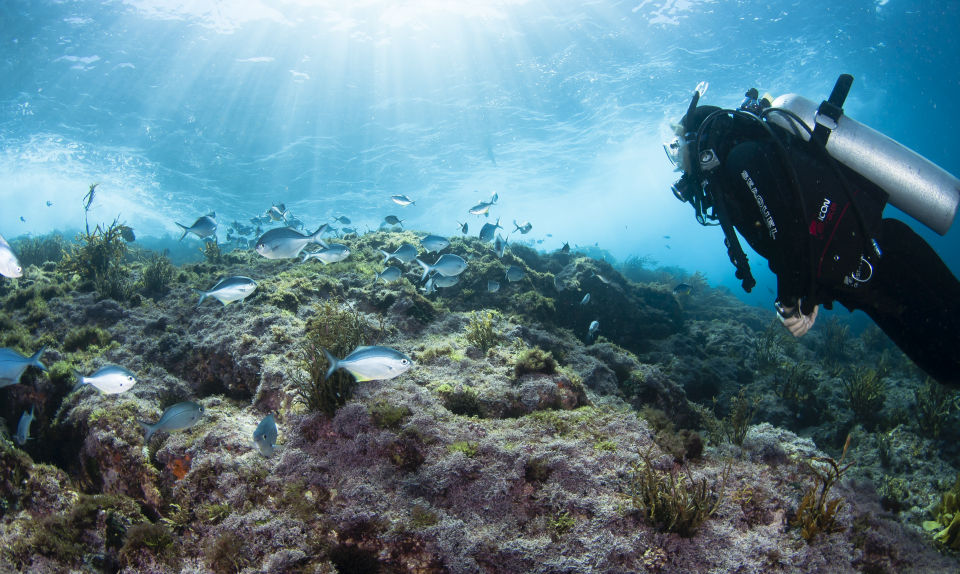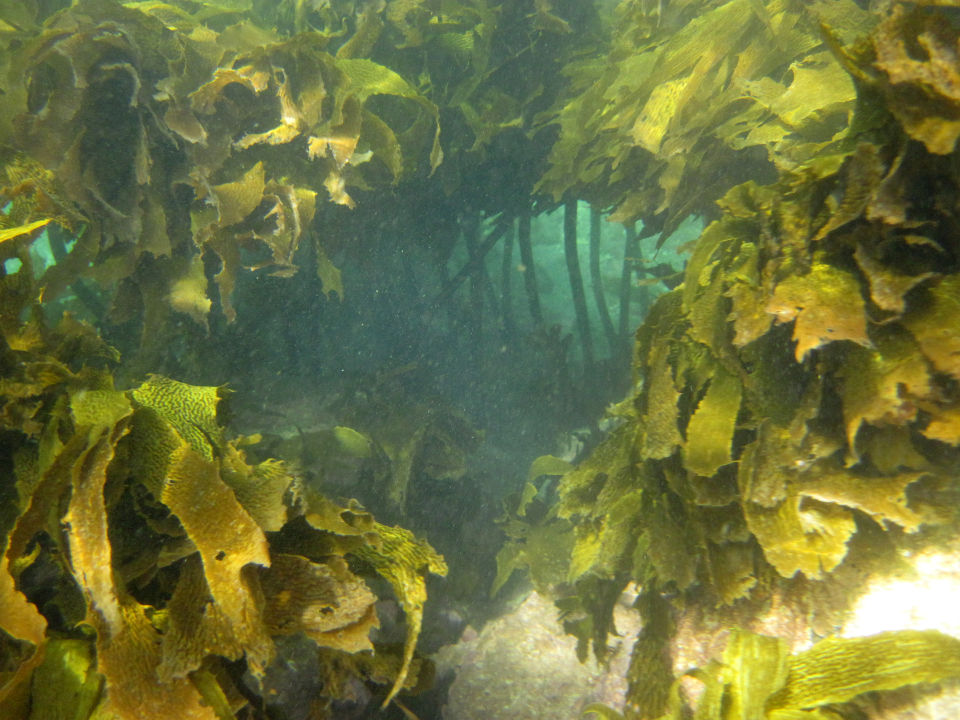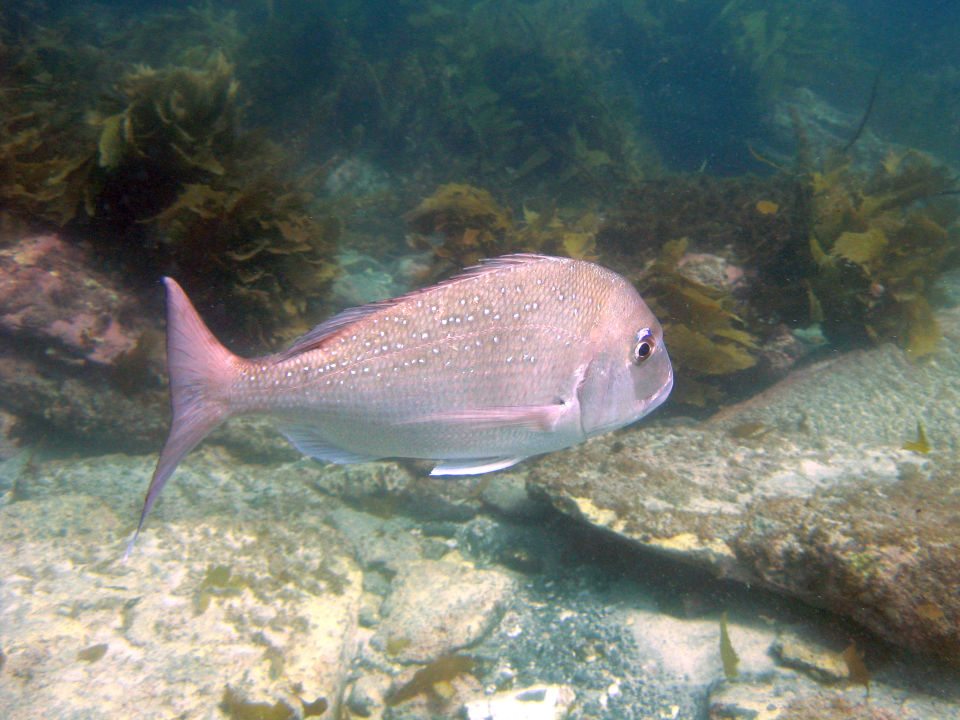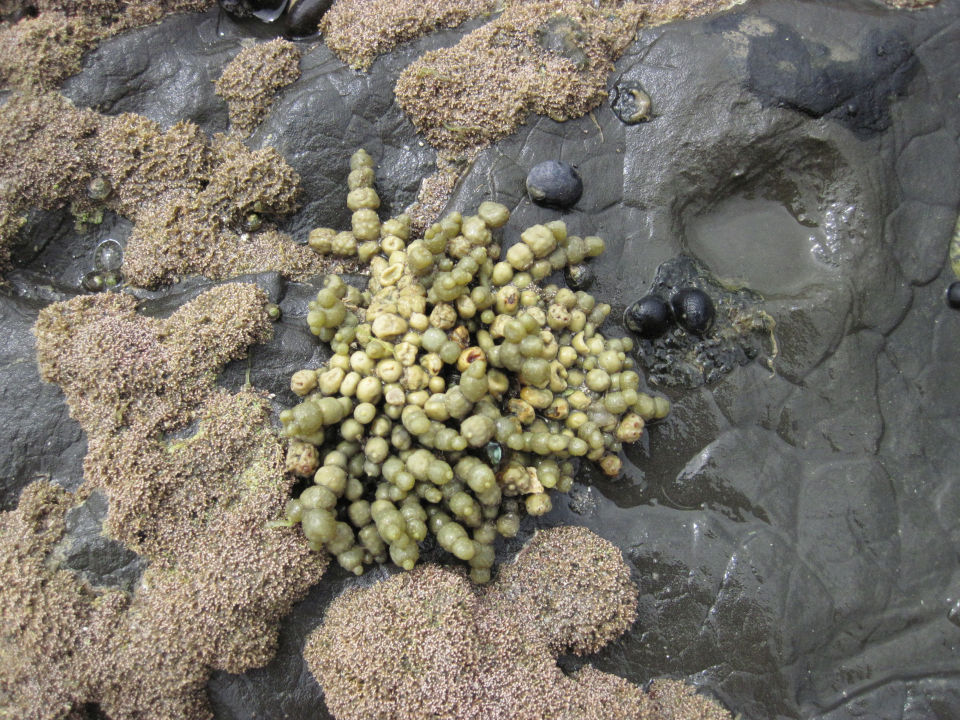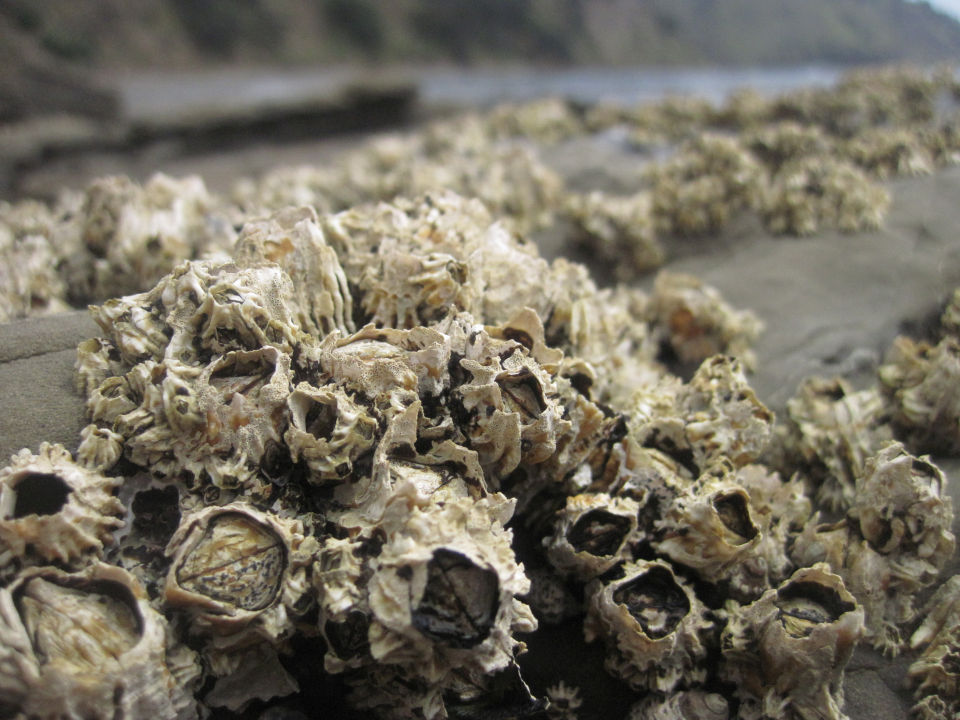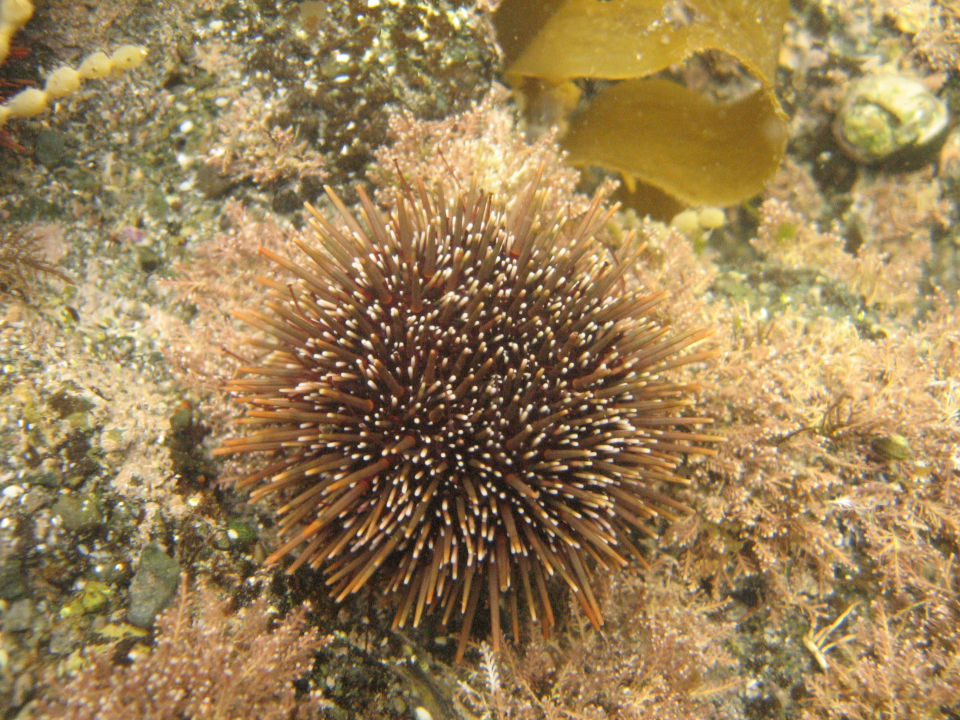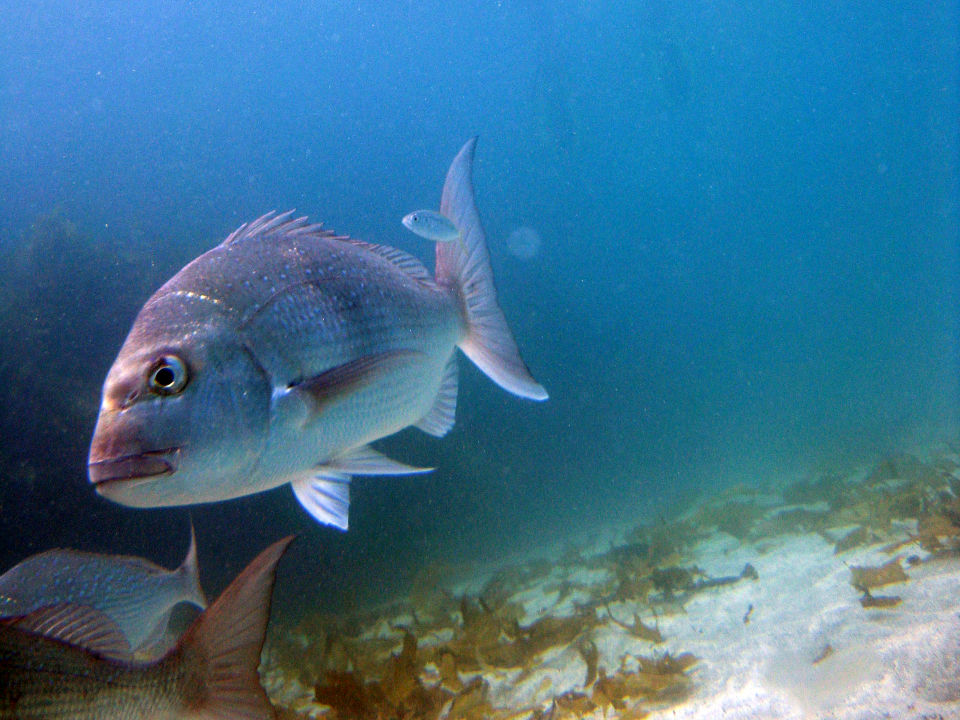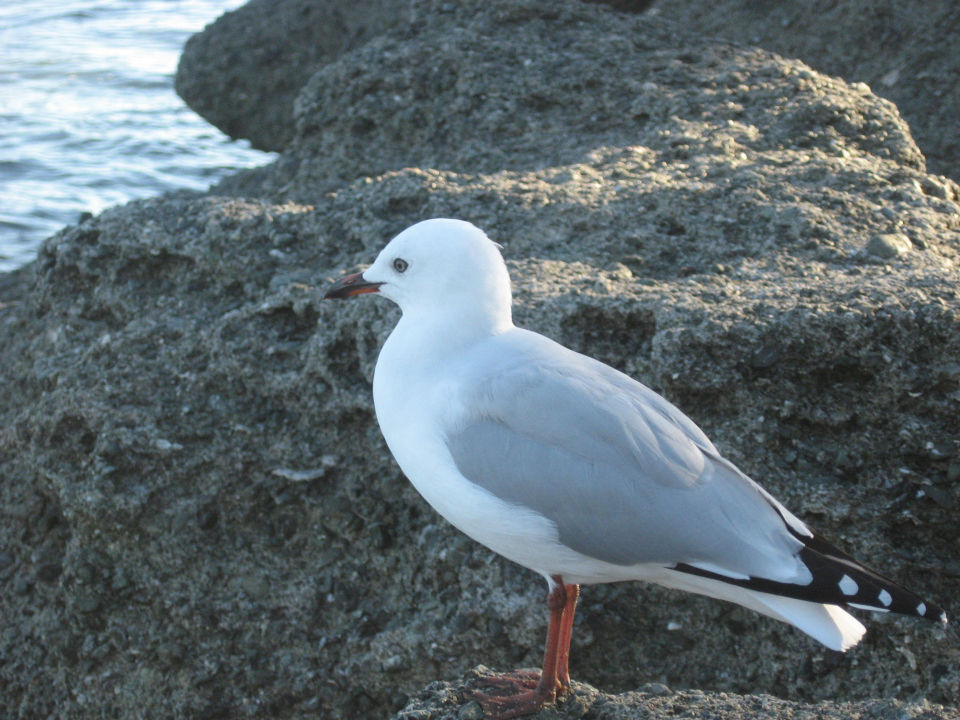What is a marine ecosystem?
A marine ecosystem is all the living and non-living things in an ocean environment which interact with each other. The living things in the ecosystem interact through behaviours such as feeding and moving.
Producers and consumers
- Producer - A living thing that can make its own food using the sun’s energy and a process called photosynthesis.
- Consumer - A living thing that eats other living things to survive. Some eat plants (herbivores), some eat other animals (carnivores), and others will eat both (omnivores).
Plants and animals interact through the ways they gain energy and feed.
Types of producers
Neptune’s necklace - Neptune’s necklace is a seaweed that makes its own food using the sun’s energy.
Phytoplankton - The main primary producers in the marine ecosystem. Phytoplankton store chemical energy from sunlight through the process of photosynthesis.
Types of consumers
Filter feeder - A type of consumer that filters water to get tiny living things (such as plankton) to eat, e.g. barnacles.
Grazer - A type of herbivore that scrapes plant matter and other small living things from the rocks to eat, e.g. kina.
Browser - A type of herbivore that eats some producers, such as seaweeds, e.g. butterfish.
Predator - A type of carnivore or omnivore that hunts and eats other consumers, e.g. snapper.
Scavenger - A type of consumer that feeds on the dead remains of living things, e.g. mud whelk.
Decomposer - Decomposers feed on waste from living things and break down their dead remains. This returns nutrients back into the ecosystem. E.g. fungi, bacteria and some invertebrates.
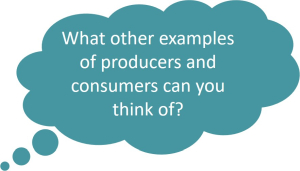
What is a food chain?
A food chain shows the flow of energy in what living things eat. A food chain always starts with a producer and then shows the consumer. The consumer is usually a herbivore that eats the producer. The carnivore then eats that herbivore, and so on until you reach the top predator. No other species will eat a top predator.
Example of a marine food chain in the subtidal zone:

What is a food web?
A food web shows the feeding relationships of living things in a habitat. Many linked food chains make up a food web.
Example of a rocky shore/reef habitat food web:
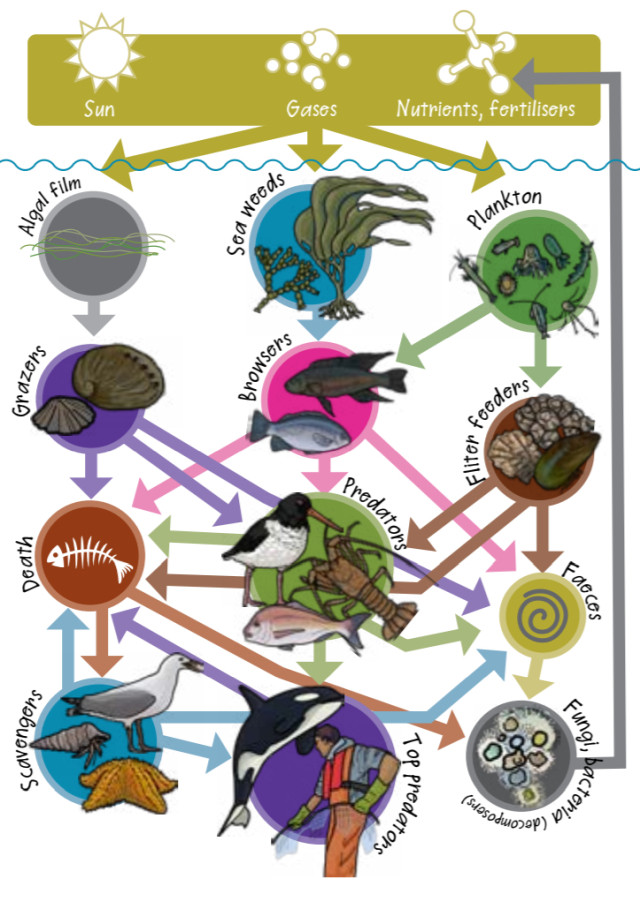
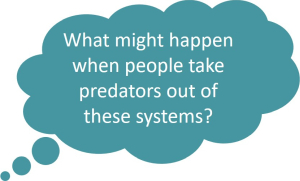
- Ready for a quiz? Try the Introducing Marine Ecosystems activity.

